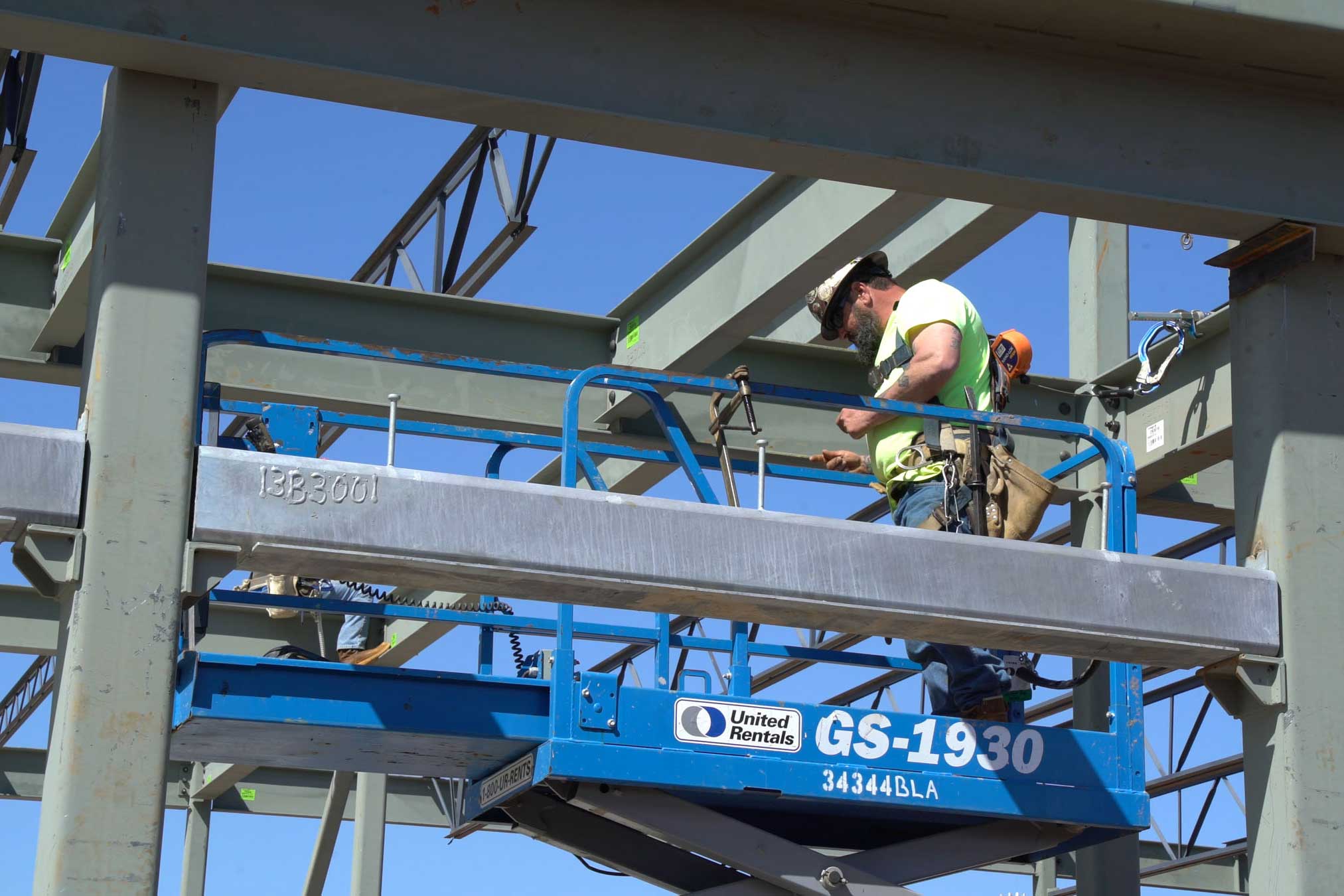
Think about an assembly line. The workers at the beginning of the line have their parts and are ready to get started. But what happens if the work station down the line doesn’t have their materials yet? Production will halt. It’s the same with building a project. We want to break ground and move dirt as fast and early as possible, but if we haven’t thought through the entire project from start to finish and planned the timeline accordingly, production in the field will inevitably come to a halt. One of the most important paths in a project that can have the greatest impact on schedule is steel. Steel drives a project schedule. Project teams can break ground, but if that early work doesn’t time out with the delivery of the structure, then work will stop, and the schedule will be delayed. So, how do you start a project as soon as possible to ensure on-time delivery, while also preventing production delays down the line? Enlist the help of an experienced contractor with excellent preconstruction skills. Here’s a few ways we’ve had success delivering projects with a large amount of steel work.
Crucial Conversations
Our preconstruction team makes sure to ask the steel trade partners pointed questions early in the budgeting and pricing phases that will help to make the decision on trade partner selection, other than just “low” price. Questions such as, “How long is it going to take to get shop drawings?” “What is the lead time for delivery of the fabricated material?” “How long will the structure take to erect?” These specific questions give us detailed timeframes to incorporate into our overall schedule to make sure it fits with our deadline. Sometimes the estimated steel delivery or erection timelines push us back too far. When that happens, our team works closely with the team (i.e. designers, trade partners, detailer) to find ways to expedite the process however we can. The earlier we have these conversations in the budgeting phases, the sooner we can work for solutions to ensure the project will be on schedule.
A New Way
The traditional process for planning steel work on a project is to receive the final construction documents, price them, get them approved, and then award the project to a steel subcontractor, who then notifies a steel detailer to begin detailing the project. We think there’s a better way. We’ve had success engaging a steel detailer as early as possible in the project and releasing them to start drawing the steel shop drawings for the submittal process at the same time we receive final construction documents and begin the pricing phase. By allowing the shop drawing process to begin earlier, we can save valuable time in the schedule and ensure quicker, on-time deliveries.
Collaborative Design
The design phase is a great opportunity to set the stage for fast steel delivery. Steel already has a long lead time, and the kind of steel you choose for a project can potentially add to that. Our suggestion is to design to readily available, standard sized steel whenever possible. Not only are standard sized steel parts readily available, there is more competitive pricing for the abundant materials which can create savings in the budget. Engage your contractor early in the design phase and give them the opportunity to work side by side with the design team to offer material suggestions that will keep your project on schedule.
In addition to steel, sitework and concrete are critical paths in a project that can threaten a budget and schedule if not properly planned and estimated early in preconstruction. Click here to read about site factors that can quickly derail a budget. For an in depth look at how our team delivered a complicated concrete foundation for an industrial manufacturing plant on time, despite multiple challenges, click here.

